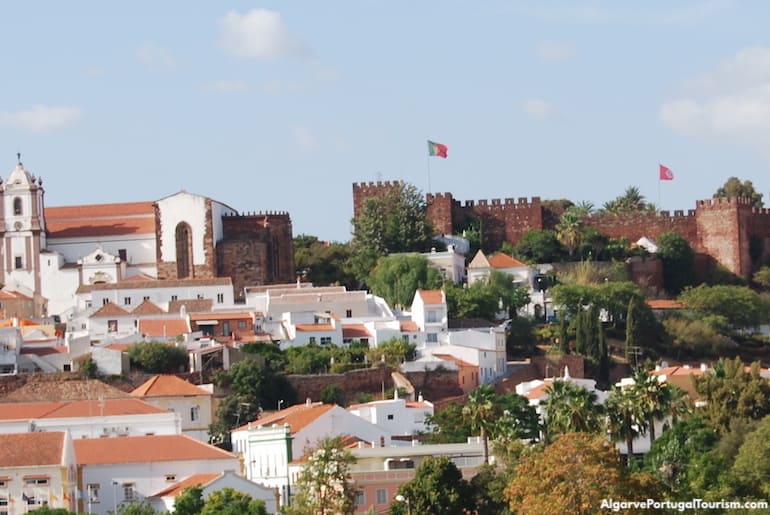
Silves was the capital of Algarve before Faro and the wealthiest city in the region under the Moors (from the 8th to the 12th centuries). Although most of the ancient buildings collapsed in the devastating earthquake of 1755, the massive Moorish castle still stands. The well-preserved and restored monument is one of the most important in Algarve and the town’s main attraction. This is a very quiet and even rather sleepy town, but a charming place to visit on a day trip from Lagos, Alvor, Portimão, Carvoeiro or Albufeira.
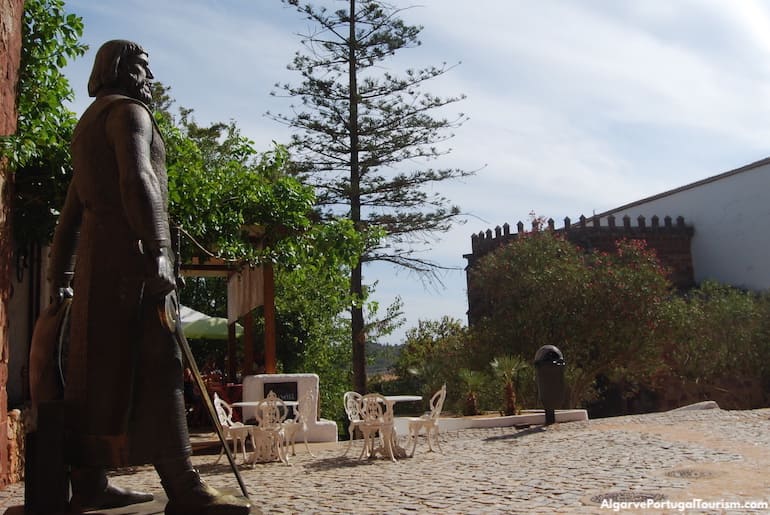
Located inland, it doesn’t have any beaches (the closest ones are in Armação de Pêra, about 20 minutes away), so it’s not a place where many tourists stay. It can be seen in just a few hours, in a morning or afternoon break from the sand. The cobbled lanes around the castle lead to a gothic cathedral and a small archaeological museum worth visiting, and there are outdoor restaurants in the center and on the riverfront for meals before heading back to the beach.
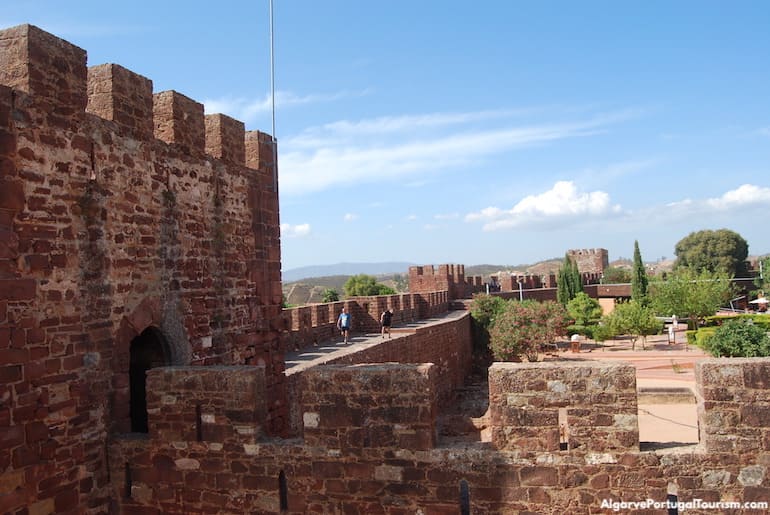
The town is located by the Arade River, which was an important route into the interior for the Phoenicians and later the Romans. When the Moors invaded in the 8th century, it grew thanks to the strategic hilltop location by the river. It was named Xelb (or Shelb) and is said to have rivaled Granada and Lisbon in splendor and influence. Regular battles from 1189 to 1249, when Portugal’s King Sancho I and English crusaders tried to and finally succeeded in capturing the town, led to its downfall. The silting up of the river and new ports in Algarve only led to more decline, and finally came the 1755 earthquake which left it almost completely destroyed. Most of the architecture around the town today is from the late 18th, 19th and 20th centuries, except for a handful of monuments.
If you’re in Algarve in August, you’ll definitely want to visit Silves, as it hosts a 1-week-long Medieval Fair around the castle (dates vary each year but it’s usually in the second week of the month). It recreates life in the 11th to 13th centuries, with people dressed in medieval costumes, reenactments of battles, a market and lots of food. Everything is paid in the currency of the time, the xilb (visitors exchange euros on the site).
What to See and Do in Silves
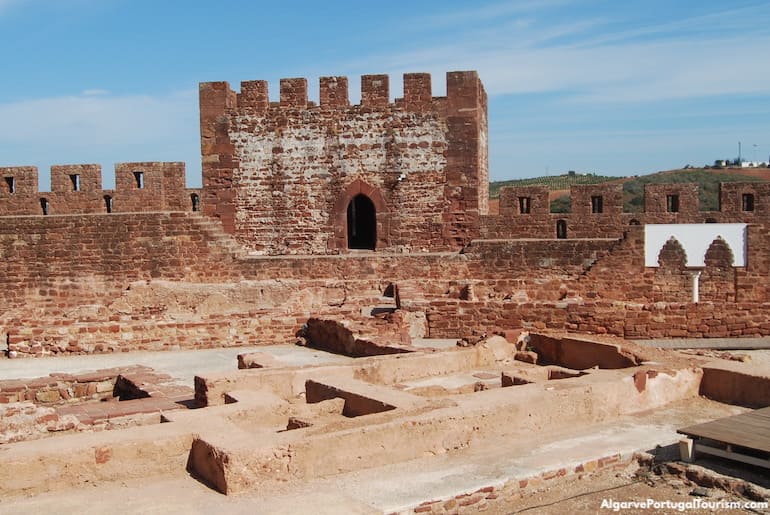
Silves Castle
Silves’ red brick castle is Algarve’s largest and the best-preserved ancient monument. Built by the Moors in the 10th century, it was expanded by the Christians until the 1500s. It was in ruins by the early 20th century, so its ten towers were restored in the 1940s. Decades later there were archaeological excavations inside its walls, and the restoration of the building and gardens was finally completed in 2009. Visitors may walk around the walls, admiring views over the town and surrounding countryside, and see two well-preserved cisterns. The oldest predates the castle, as it was already used by the Romans. The newest one, supported by 12 columns, is from the 12th century and used for temporary exhibitions. The castle was home to governors, but their residences disappeared over the centuries and only the archaeological remains of their foundations remain. Outside, by the entrance, is a bronze statue of King Sancho I, who first conquered the castle and the town for the Portuguese kingdom in 1189. It opens seven days a week, only closing on Christmas and New Year’s day.
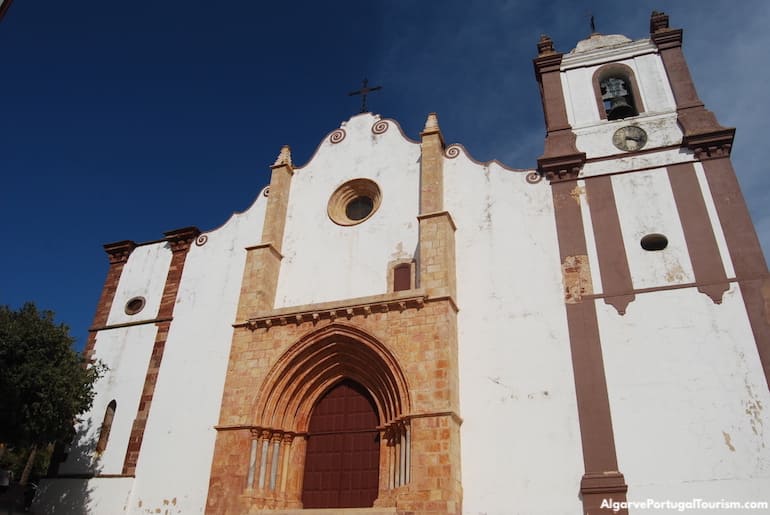
Silves Cathedral
Silves’ cathedral is found just below the castle. It was originally built at the end of the 13th century, on the site of a mosque. It had to be restored in the 18th century, after the damage caused by the 1755 earthquake. Much remains from the original building, including the gothic doorway and the columns that support the nave. The clock tower is from the 18th century. It holds the tomb of King João II, who was buried here in 1495, although his remains were later moved to the Batalha Monastery in central Portugal. It’s open from Monday to Friday.
Rua da Sé
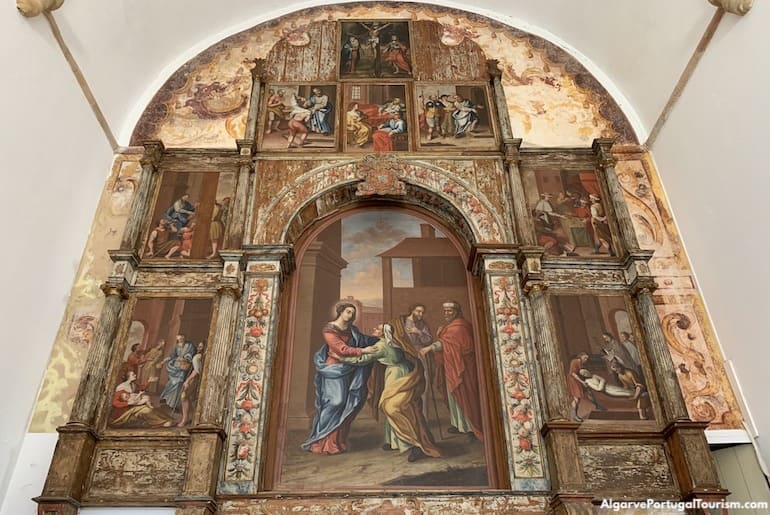
Igreja da Misericórdia (Mercy Church)
In 1491, Silves was donated by King João II to his queen Leonor, and this church was later built to serve the Santa Casa da Misericórdia, a charity that Leonor founded to treat the sick. The building has a very plain exterior, with nothing but a classical portal as the main entrance and a more intricate Manueline (Portuguese gothic) portal on the side, facing the cathedral, added in the 1520s. Inside, it lacks ornamentation and is completely painted white. The only color is that of the altarpiece, which covers an entire wall. It dates from the mid-1700s and is an example of the rocaille style. The central image depicts the Visitation (the visit of Virgin Mary, who was pregnant with Jesus, to St. Elizabeth, who was pregnant with John the Baptist, as told in the Gospel of Luke), and was painted in 1727. Surrounding it are seven other paintings, dating from much earlier (1630) and illustrating the seven Corporal Works of Mercy.
Rua da Misericórdia, 2
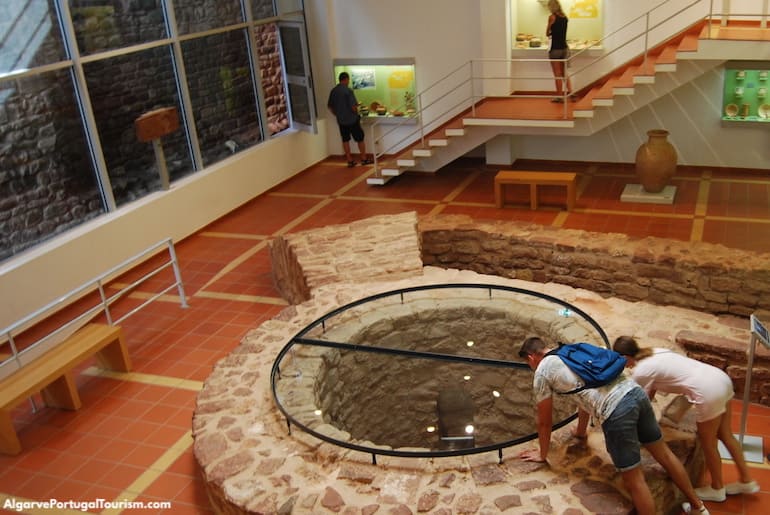
Silves Archaeological Museum
This small museum explains the history of Silves and much of the Algarve through prehistoric, Roman and Moorish artifacts found in the area. The centerpiece is a Moorish well from the 12th century, discovered during excavations in the 1980s, shortly before the building was completed and the museum inaugurated in 1990. Another highlight of the collection, which goes from the paleolithic period to the 17th century, is a menhir from the neolithic age, and there’s also part of Silves’ Moorish wall. It opens seven days a week (closing only on Christmas and New Year’s day).
Rua da Porta de Loulé, 8
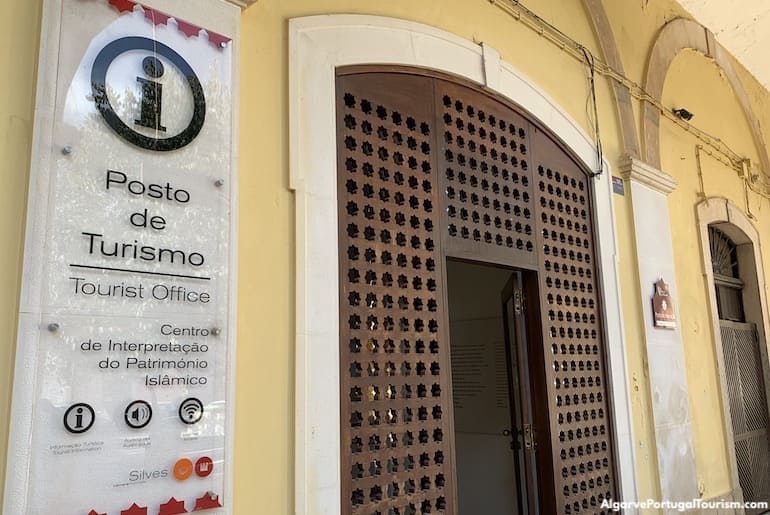
Islamic Heritage Interpretation Center
Silves’ small main square (Praça do Município) is home to the tourist office, which occupies the same space as the Islamic Heritage Interpretation Center, inaugurated in 2002. It’s divided into three sections, recalling the Islamic influence in the town, especially in agriculture, and presenting poems written by the poet-king Al-Mutamid. In the same square stands the old Town Gate. It’s free and open from Monday to Friday.
Largo do Município
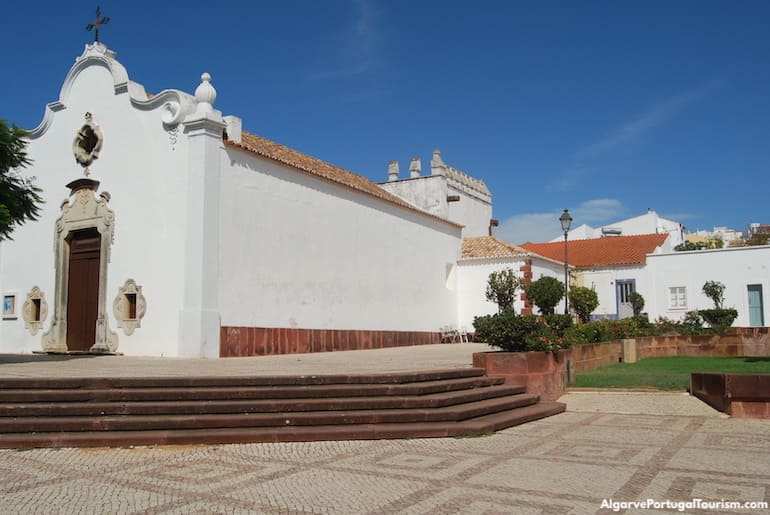
Chapel of Our Lady of the Martyrs
It was once believed that this chapel was built in the 12th century to hold the remains of those who died in the siege of Silves in 1189 (the “martyrs”), but the architecture points to the 16th century as the time of construction of the present building. It stands outside the old center (to the west) and isn’t regularly open to visitors. If you find it open, it’s worth taking a look inside to admire the gothic and Manueline vault and the baroque altarpieces.
Largo dos Mártires da Pátria
Old Bridge
It’s sometimes called “Roman Bridge,” but that’s an error, since it dates from the 14th century. Historians do believe, however, that it’s on the site of an older Roman bridge. Until the 1960s, it was the main access to the town, and is now for pedestrian use only. It’s 76 meters long and 5 meters wide, and supported by five Roman-inspired arches. Cross it for a panoramic view of the town and of the orange and almond trees of the countryside.
How to Get to Silves
By car, Silves is about 30 minutes from Albufeira, 35 minutes from Lagos, 25 from Alvor and Portimão, 20 from Carvoeiro, and about 50 from Faro. It’s recommended that you go by car, since public transportation connections are very poor. There is a train with about 10 daily departures from the major towns (taking about 30 minutes from Albufeira, 35 to 40 minutes from Lagos, 15 minutes from Portimão, and one hour and ten minutes from Faro), but the station is very far (about 2 kilometers or over one mile) from the center. To reach the tourist attractions from the station, you need to walk for about a half hour up a busy road that’s not so pedestrian-friendly, or be lucky to find a taxi around the station for the 10-minute ride to town.
There’s a bus from Albufeira (number 17, operated by Vamus), but it only has about half a dozen departures per day and takes 45 minutes. From Portimão, bus 113 has half a dozen departures on weekdays and just three on weekends, and takes 40 minutes.
Those going by car will find parking spots on the streets or can park on the lot on Rua da Cruz de Portugal on the riverfront. The town is very small, and can easily be explored on foot.
Hotels in Silves
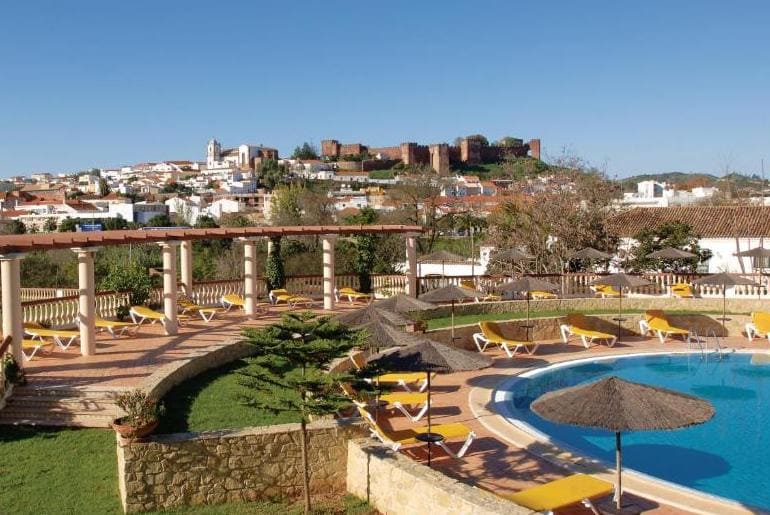
Hotel Colina dos Mouros
The only hotel in Silves offers a basic 3-star service but the castle views are exceptional. Not all rooms have a view, so make sure you select one of the double or twin or triple rooms with a castle view when booking. Everyone does get to enjoy the same panoramic view from the terrace where breakfast is served and from the swimming pool.
SEE PRICES, AVAILABILITY AND MORE DETAILS HERE: Hotel Colina dos Mouros
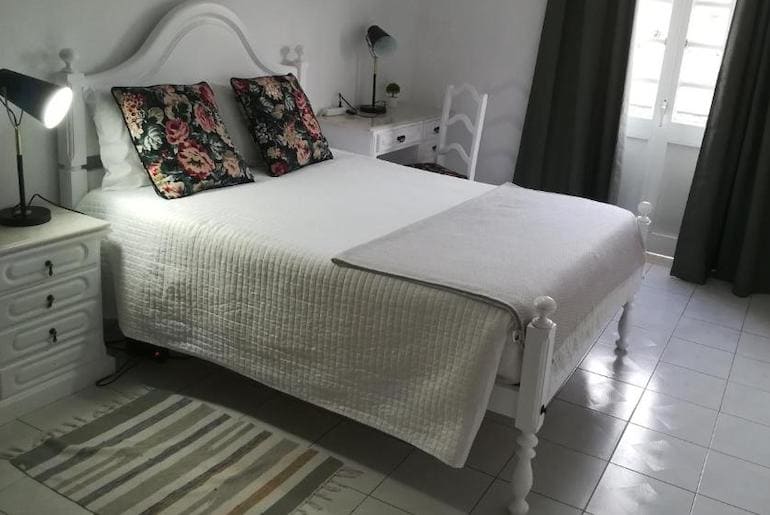
Ponte Romana
Due to its location across the river, this guesthouse offers castle views from some of the rooms and from a terrace where guests can relax at the end of the day. It’s by the “Roman bridge,” so a short walk from the tourist attractions.
SEE PRICES, AVAILABILITY AND MORE DETAILS HERE: Ponte Romana
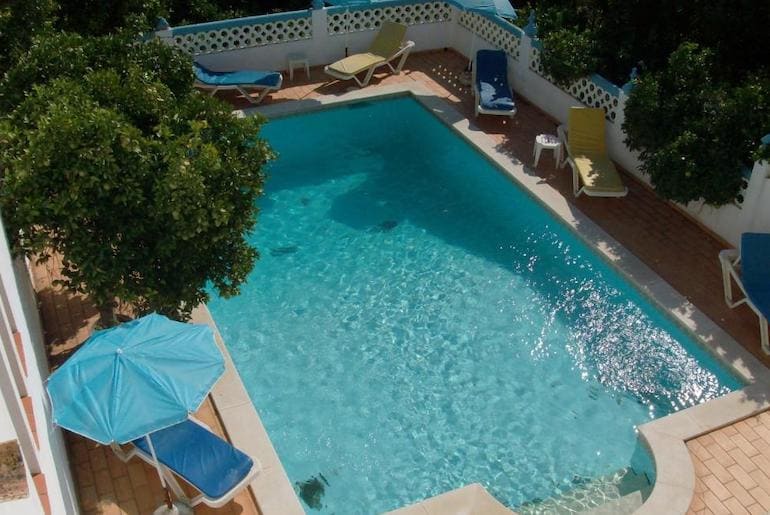
Vila Sodré Guesthouse
It’s on one of the main roads to Silves, but is very quiet, with views of the countryside. It’s a good value, with classically-styled double and triple rooms with small terraces, an outdoor swimming pool, and a wine cellar.
SEE PRICES, AVAILABILITY AND MORE DETAILS HERE: Vila Sodré Guesthouse
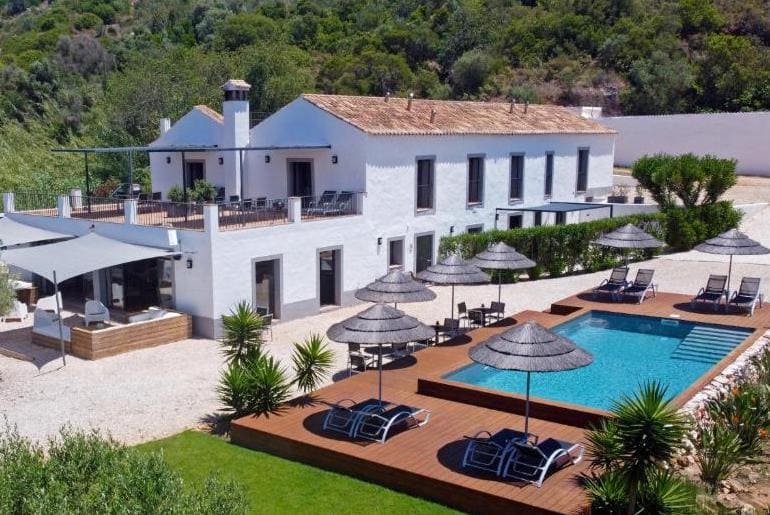
Quinta Tapada do Gramacho
A traditional farm house has been restored to welcome travelers who prefer to stay in the country instead of the beach. It’s located 10 minutes to the west of the center of Silves, and divided into suites and apartments. Each unit features a unique décor, ranging from “baroque” to “vintage” to contemporary. All guests have access to the outdoor pool, surrounded by the peaceful atmosphere of the countryside.
SEE PRICES, AVAILABILITY AND MORE DETAILS HERE: Quinta Tapada do Gramacho